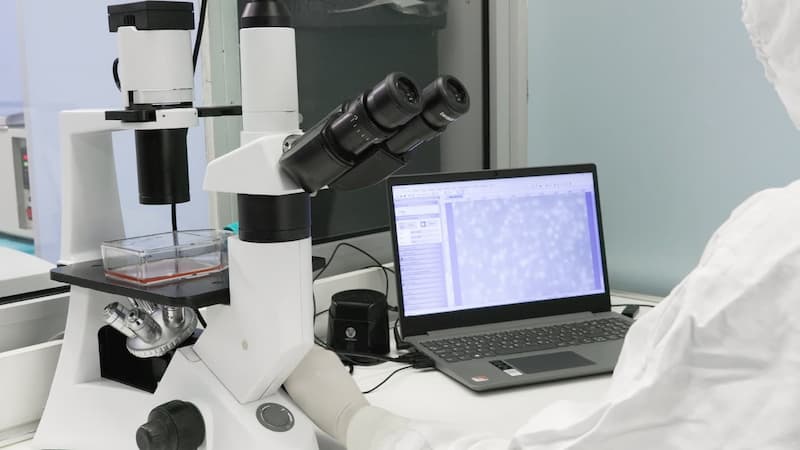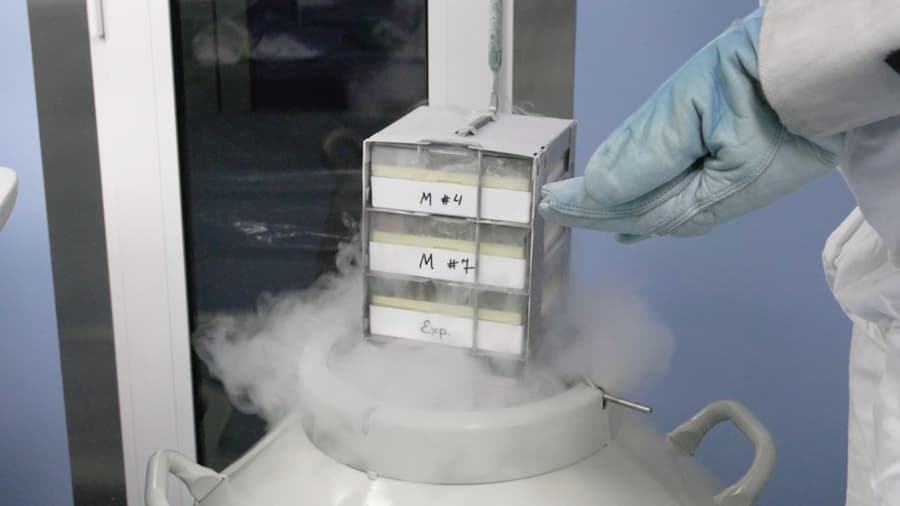Stem cells are the remarkable building blocks of life, with the unique ability to develop into various types of cells within the body.
What Are Stem Cells?
When a baby is just starting to grow inside the womb, there’s a tiny ball of cells called a blastocyst. The inner cells of a blastocyst are stem cells that can differentiate into any part of the body: the heart, brain, skin, etc. Practically, they’re responsible for building the whole baby from scratch.
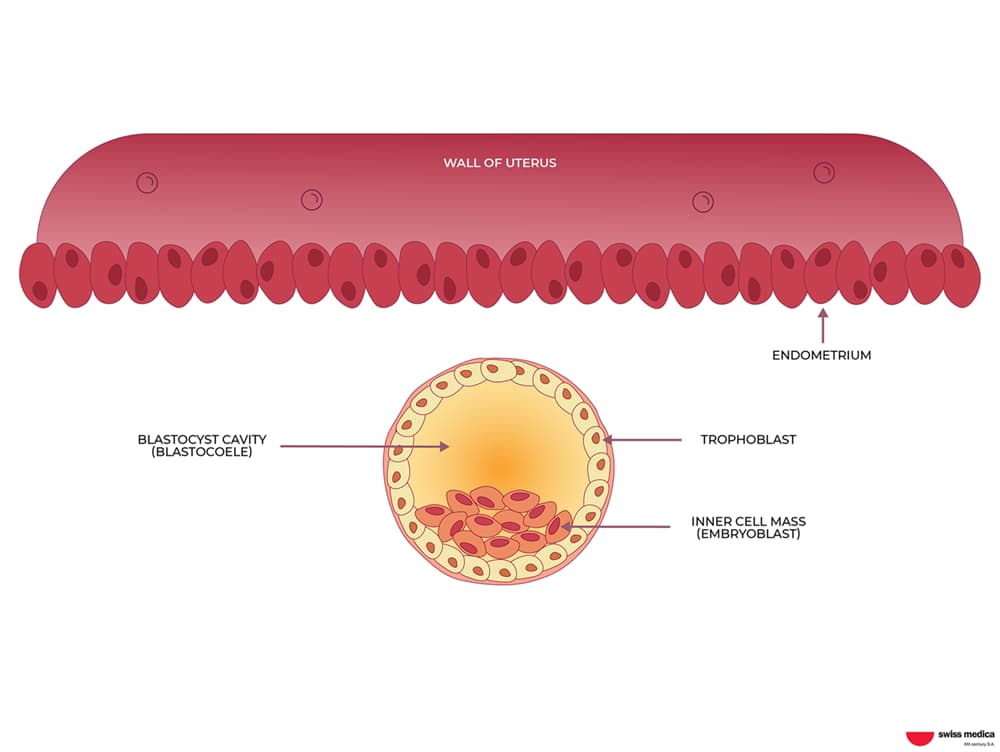
Some types of stem cells remain inside our bodies throughout our lives. They are present in various tissues, such as the brain, bone marrow, blood vessels, muscles, skin, and liver, and have the potential to grow into any of the body’s more than 200 cell types. However, they remain in a non-specific state until the body needs them for a certain purpose.
With their distinct regenerative powers, they provide hope for treating a wide range of diseases and health conditions. That’s why the therapeutic potential of stem cells has been the focus of much scientific research.
What Are the Different Types of Stem Cells?
Let’s begin by addressing the question: “How many different types of stem cells are there?”
There are three main types of stem cells often mentioned in the context of stem cell therapy:
- embryonic stem cells,
- adult stem cells,
- induced pluripotent stem cells (iPSCs).
The main differences between them lie in their origin, potency—the ability to change into different cell types—and potential applications in research and medicine.
How many cell types can stem cells develop into? That question categorizes stem cells into:
- totipotent (can become any cell),
- pluripotent (can become many types of cells),
- multipotent (can become several types of cells),
- oligopotent (can become a few types of cells),
- unipotent (can become only one type of cell).
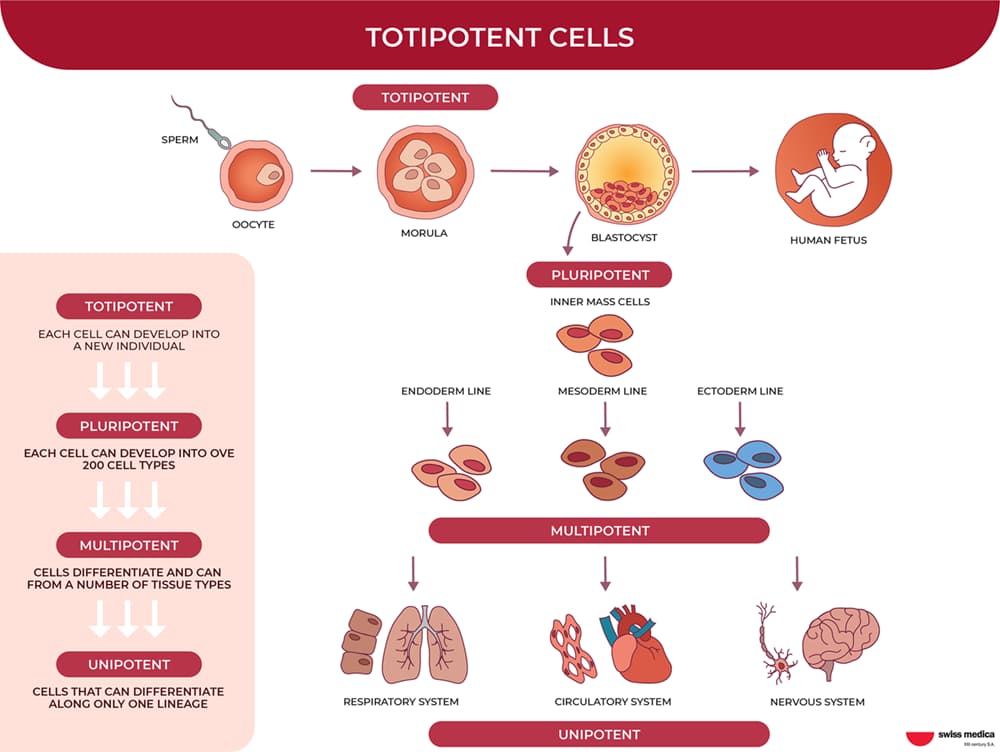
Let’s compare the different types of stem cells in the table below.
| Embryonic stem cells (ESCs) | Totipotent and pluripotent cells | They are the most versatile and powerful stem cells, capable of differentiating into any cell type required for the development of a complete organism. They are present only in the earliest stages of embryonic development, laying the foundation for the entire organism’s formation. |
| Adult stem cells | Mostly uni-, oligo- or multipotent stem cells | They are limited to developing into a certain range of cells, typically within a specific lineage. For example, skin stem cells can only produce different cell types of the skin, but not blood or nerve cells. Examples include mesenchymal stem cells (MSCs), which are found in many types of tissues, including fat tissue, bone marrow, intestine, placenta, and umbilical cord. |
| Induced pluripotent stem cells (iPSCs) | Exhibit pluripotent capabilities | These are mature body cells reprogrammed to behave like pluripotent embryonic stem cells. Derived from the patient’s own cells, they can self-renew and differentiate into any cell type in the body. Shinya Yamanaka was awarded the 2012 Nobel Prize in Physiology or Medicine for this discovery. |
While iPSCs showcase promise for regenerative medicine, at Swiss Medica we do not use them, since they are not yet part of clinical practice. For now, there is ongoing research utilizing iPSCs for 3D organ modeling and disease studies.
Get a free online consultation
Curious about how adult stem cells could help in your case? Learn more by scheduling a free, no-obligation online consultation with one of our medical advisors.

Medical Advisor, Swiss Medica doctor
Which Stem Cells Are Used in Stem Cell Therapy?
According to a report at Science Direct, many businesses in the US market stem cell therapies giving confusing descriptions of their products.
These raise worries about whether people fully understand what they are agreeing to, whether vulnerable people are being put in danger, and whether the treatments being sold are safe and effective.
Here, we will try to clear up this stem cell mess.
Adult Stem Cells vs. Embryonic Stem Cells—Which Ones Work the Best?
As we have mentioned, totipotent embryonic stem cells (ESCs) have the potential to develop into any cell type in the body, making them a promising area of research for treating various diseases. Then why do trusted medical institutions avoid using them in treatments?
Key Drawbacks of Embryonic Stem Cells
Ethical Concerns
Firstly, the use of ESCs involves the destruction of blastocysts (structures formed in the early development of the baby), which are formed from laboratory-fertilized embryos. For many, this is a significant ethical concern, especially those who believe that life begins at conception.
Tumor Formation
Since ESCs can differentiate into any type of cell in the body when injected into adult tissues, they can grow irregularly or specialize in different cell types spontaneously if they are exposed to unfavorable conditions.
Genetic Instability
Research has shown that embryonic stem cells, obtained from artificially created embryos, can exhibit genetic abnormalities. They pose challenges in ensuring the long-term safety and success of treatments involving embryonic stem cells.
At Swiss Medica, we prioritize the safety of our patients above all else. To avoid any potential negative effects linked to embryonic stem cells, we exclusively utilize:
- Adult multipotent MSCs from a donor or a patient
- Secretome and exosomes from these cells.
Key Advantages of Adult Stem Cells
Adult MSCs, on the other hand, have emerged as a safer and more practical alternative for clinical use. Here’s why:
Proven Safety
MSCs are multipotent stem cells that naturally reside in tissues such as bone marrow, fat, and umbilical cord tissue. Unlike ESCs, MSCs do not form teratomas or other tumors, making them a safer option for therapeutic applications.
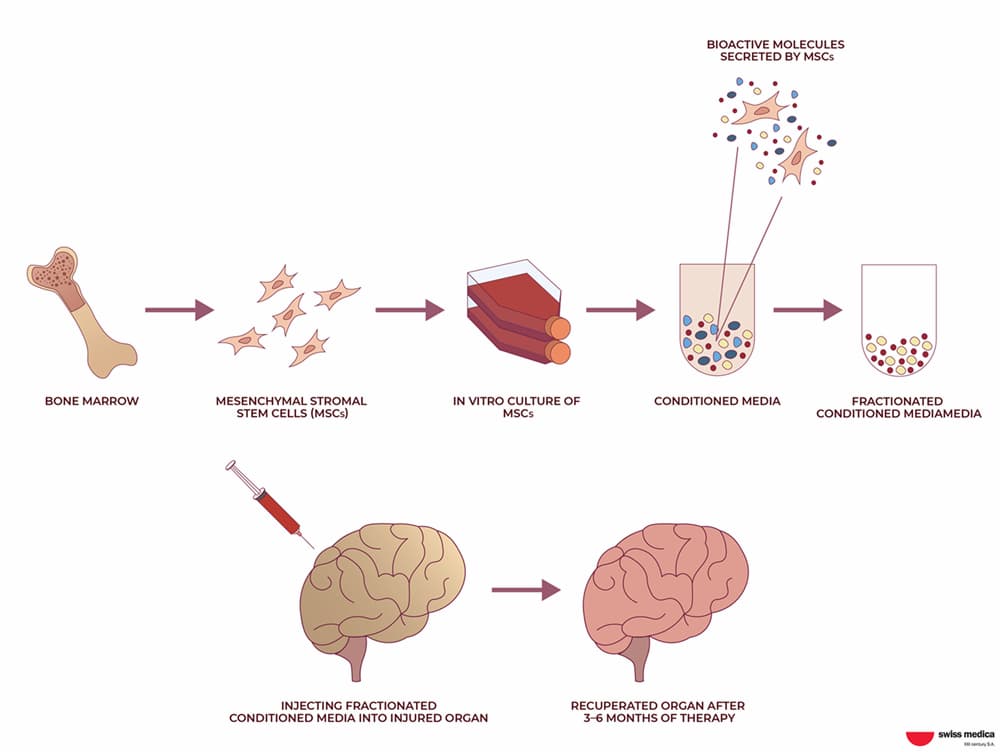
Immune Modulation
MSCs have powerful immunomodulatory properties, which means they can regulate the immune response and reduce inflammation. This makes them particularly valuable in treating autoimmune conditions and inflammatory diseases.
Ethical Acceptability
Because MSCs are harvested from adult tissues or birth-related tissues like the umbilical cord (which are typically discarded), their use avoids the ethical concerns associated with embryonic stem cells.
Law Risk of Rejection
MSCs can be used in autologous therapies, where the patient’s own cells are harvested, processed, and reintroduced into their body. This reduces the risk of immune rejection compared to ESC-based treatments.
Looking for information on stem cell safety?
Explore our detailed guide to learn more about how stem cell therapy is revolutionizing medicine with safe and effective treatments.
Donor vs. Patient’s Stem Cells: How Do We Choose the Right Therapy?
Two main types of stem cells are used in therapy:
- Autologous stem cell transplants—they come from the patient’s own body.
- Allogeneic stem cell transplants—they come from a donor, either related or unrelated.
Some patients believe that the body may reject donor types of stem cells and that family members can provide bone marrow more suitable for them. However, this is not always the case. Sometimes patients have better odds of matching with someone who is unrelated and shares their ethnic background.
When choosing the right therapy at Swiss Medica, we consider various factors, including the type of condition being treated, the patient’s circumstances, i.e., the age of the patient, the availability of a suitable donor, and susceptibility to immune effects.
What are the different types of stem cell therapies at Swiss Medica? Explore our dedicated section to learn about each type and their role in our innovative treatments.
I want to knowStem Cell Types and Applications at Swiss Medica
| Autologous Stem Cell Transplants | Allogeneic Stem Cell Transplants | |
|---|---|---|
| Advantages |
|
|
| Disadvantages |
|
|
| When do we use them |
|
|
In our practice, we often use a combination of our own and donor cells, as this allows us to use the advantages of both methods.
How many different types of stem cells are there at Swiss Medica? Explore our full catalog to find out.
ExploreLive Stem Cells vs. Thawed: Which Option is Better in Therapy?
Live stem cells are cells that are freshly extracted or cultured.
Thawed stem cells, on the other hand, are cells that have been previously frozen and then thawed for use immediately before the injection procedure. Careful and rigorous cryopreservation, thawing, and preparation processes are crucial to ensure good viability and recovery of the thawed MSC product.
Having our laboratories on site eliminates the need for freezing donor stem cells in many cases.
In our own laboratory, we carefully prepare different types of stem cells from donor or patients’ tissues.
On the other hand, we have the ability to freeze and store the patient’s own cells for multiple future uses, eliminating the need for a painful and complex cell collection procedure before each treatment.
Our technology involves monitoring cells after thawing, bringing them into an active state, assessing their viability, and removing inactive cells. This enhances the quality and effectiveness of treatments offered in Swiss Medica.
Wondering how we operate?
Take a glimpse into our laboratory and learn more about the cutting-edge processes that set us apart.
Depending on the therapeutic purposes, different types of stem cells can be used for various tasks. The doctor will recommend the most suitable stem cell types and their uses to maximize the potential benefits of the therapy.
Contact us
Looking for treatment alternatives for your ailment but unsure if stem cell therapy is right for you? Leave your information, and we will schedule a free online consultation with our experts to help you understand stem cell therapy.

Medical Advisor, Swiss Medica doctor
Ready to delve deeper into the world of stem cells?
Discover more about their potential and explore other insightful articles.
List of References
University of Kansas Medical Center, About Adult Stem Cell Therapy, https://www.kumc.edu/research/midwest-stem-cell-therapy-center/stem-cell-information/about-adult-stem-cell-therapy.html
Shinya Yamanaka – Facts. NobelPrize.org. Nobel Prize Outreach AB 2024. Thu. 4 Jul 2024. https://www.nobelprize.org/prizes/medicine/2012/yamanaka/facts/
Leigh Turner, Paul Knoepfler, Selling Stem Cells in the USA: Assessing the direct-to-Consumer Industry, Cell Stem Cell, Volume 19, Issue 2, 2016, Pages 154-157, ISSN 1934-5909, https://doi.org/10.1016/j.stem.2016.06.007.
Spits, C., Mateizel, I., Geens, M. et al. Recurrent chromosomal abnormalities in human embryonic stem cells. Nat Biotechnol 26, 1361–1363 (2008). https://doi.org/10.1038/nbt.1510
Richard Champlin, MD., Selection of Autologous or Allogeneic Transplantation, Holland-Frei Cancer Medicine. 6th edition. https://www.ncbi.nlm.nih.gov/books/NBK12844
